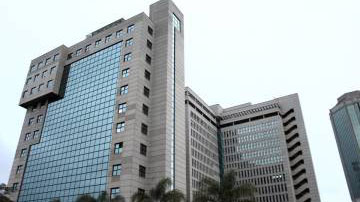
The Sunday Mail

Emmanuel Kafe
Nearly half a million formal jobs have been created since 2018, underlining the enabling environment that Government has created for the private sector to invest and expand.
However, recruitments slowed in 2020 as a result of Covid-19.
Latest figures from the National Social Security Authority (NSSA) show that 479 709 new workers have been registered with the pension scheme from January 1, 2018 to date.
In 2018, 20 640 jobs were created, while the number peaked to 242 998 jobs in 2019.
The figures went down to 78 409 in 2020 before picking up to 121 145 in 2021.
So far, in 2022, 16 517 new workers have been registered.
NSSA’s marketing and communications executive Mr Tendai Mutseyekwa told The Sunday Mail that agriculture had created the highest number of jobs.
“The peak period for new jobs creation was in 2019 where 242 998 new jobs were registered. The trajectory was seriously hampered by the Covid-19 pandemic. The impact of the Covid-19 pandemic on new job registration is evidenced by a sharp decline in new registrations in the year 2020, where the intensity of national lockdowns was the highest,” he said.
“The agricultural sector was the biggest employer throughout the period on analysis. This was followed by the retail and general business sector.”
Public Service, Labour and Social Welfare Minister Professor Paul Mavima said new jobs could have been higher had it not been for disruptions caused by the pandemic.
“The number of people that have been absorbed in both the public and private sector due to the expansion of the economy is enough proof of the work that is being put in by the Second Republic. The emerging signs of recovery after four years of incredibly hard work are now apparent despite the effects of the pandemic,” he said.
It was noteworthy, he added, that despite the pandemic, news jobs continue to be created.
“We were surprised to realise that in the middle of Covid-19, we were creating jobs instead of losing them. There were a few retrenchments, but we managed to retain jobs and workers.”
Prof Mavima said employment figures were in sync with growing economic activity, especially in the manufacturing sector, which has been supplying most retailers with locally-produced goods.
“The fact that 75 percent of our products are locally-manufactured should be telling; it means more employment within our country.”
According to the Confederation of Zimbabwe Industries (CZI) 2021 manufacturing sector survey report launched in Harare on Wednesday, capacity utilisation in the manufacturing sector jumped to 56,5 percent in 2021 from 47 percent in 2020 largely driven by increased investments in industry.
“About 37,8 percent of the manufacturing sector undertook investments to increase their production capacity in 2021 and this resulted in additional capacity of 25,6 percent,” CZI chief economist Dr Cornelius Dube said while presenting the report.
He said about 57 percent of manufacturing sector firms registered an increase in sales, with the drinks and tobacco sub-sector recording an 82 percent growth in output.
It also had the highest percentage of firms registering an increase in sales and volumes.
The business representative group said the number of new jobs created in industry last year increased by 20 percent compared to 2020.
In her remarks at the same launch, Industry and Commerce Minister Dr Sekai Nzenza said the growth in capacity was in response to “an enabling business environment” and the ease of doing business reforms prioritised by the Second Republic.
Economist Professor Gift Mugano said the figures were encouraging and showed that Zimbabwe’s economy was on a growth trajectory despite current headwinds.
“The number of people employed as reported by NSSA could be coming from two fronts: The first front is new ventures which we saw, particularly in the mining and agriculture sectors; naturally, it would come with new jobs and also new establishments in the manufacturing sector,” he said.
“The second front is related to capacity utilisation. According to last year’s CZI’s report, capacity utilisation was about 60 percent, and when that happens, you can see an increase in the number of people employed to support that level of production.”
Prof Mugano said the trend was likely to continue if currency volatility was tamed.
“The challenge we have now is currency stability. When the currency is not stable, it erodes the cash flow of the company and naturally it impairs any growth prospects. Normally, growth is associated with job prospects. Going forward, we need to rein in on currency, exchange rate instability and inflationary pressures; we need to restore stability to create a framework and an environment for economic growth, which will then create more jobs.”
A lot of new investments expected to add new jobs are currently underway in various sectors.
More than 1 500 workers have been recruited by Dinson Iron and Steel Company, a unit of Tsingshan Holdings, which is in the process of developing an iron ore mine and steel plant in the Mvuma-Chivhu-Manhize area.
An additional 3000 jobs will also be added soon.
According to the Zimbabwe National Statistics Agency (Zimstat), an employee is anyone who works for a public or private employer for more than 30 hours per week, whilst an employer is any individual or entity that employs a worker for more than 30 hours per week.



